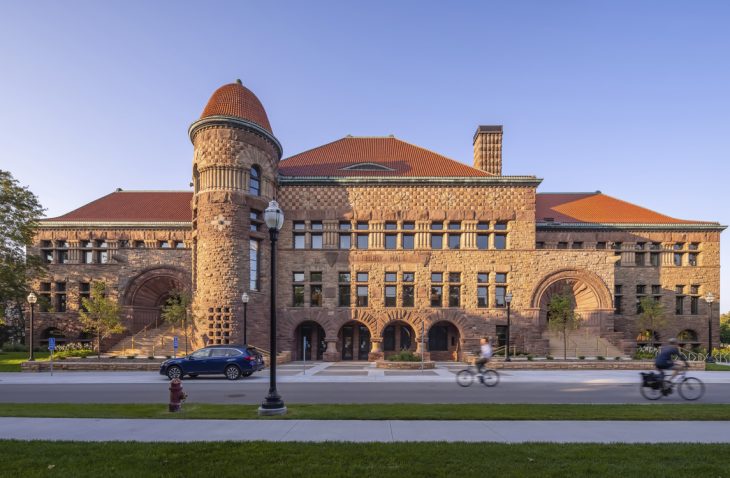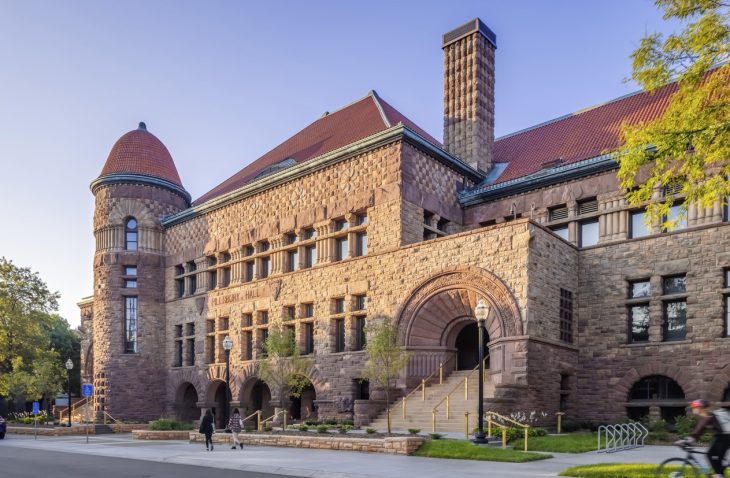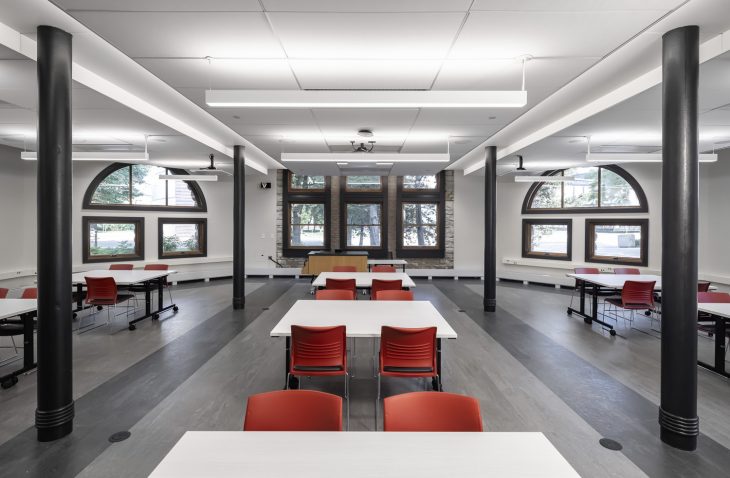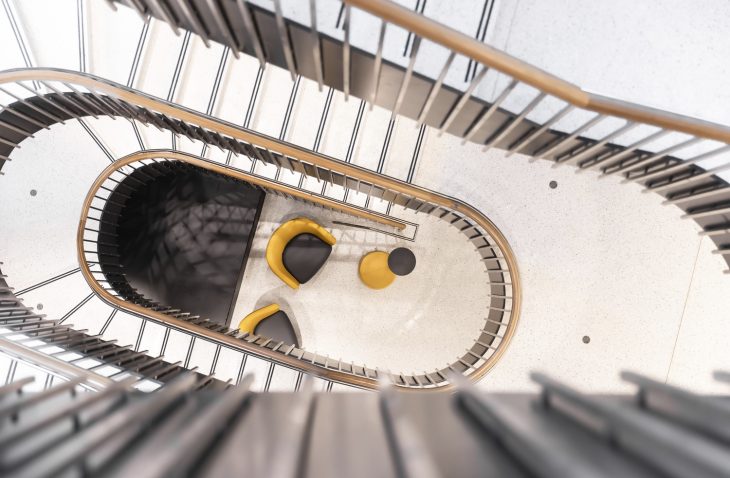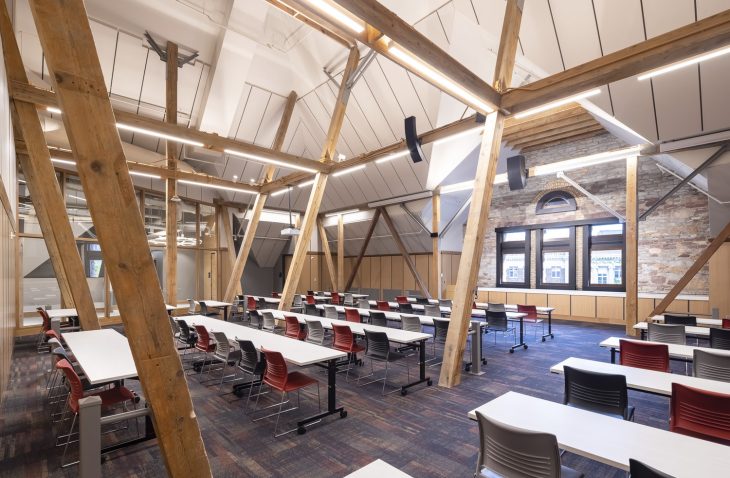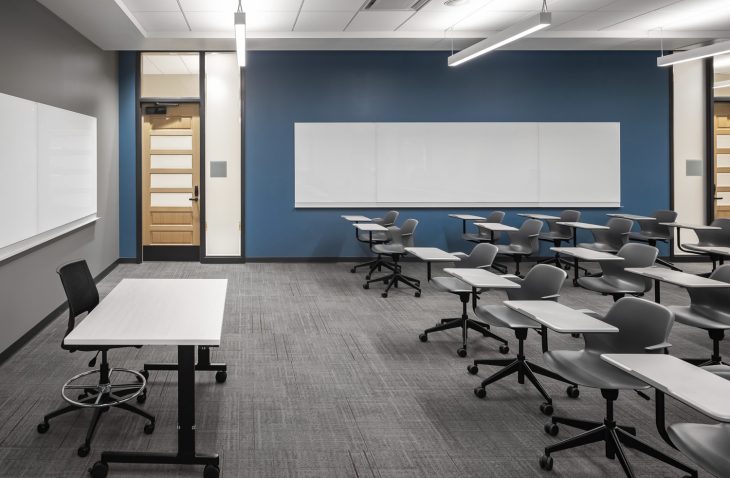Historic Building Renovation
The newly renovated 62,500-square-foot Pillsbury Hall is the second oldest – and most iconic – building at the University of Minnesota’s East Bank campus. IMEG provided mechanical engineering and design services for the renovation of the building, which was originally constructed in 1889 as a science hall. In June 2021, the building reopened as a home for the Department of English, its Creative Writing Program, and the Liberal Arts Engagement Hub with contemporary learning environments, non-laboratory research, and space for collaboration.
The $36 million renovation of Pillsbury Hall created modernized offices, open-office space for graduate students, conference rooms, classrooms with flexible seating, study and gathering spaces, a media lab, and production space for the department’s two literary magazines. The Liberal Arts Engagement serves as a space for classes, workshops, training sessions, listening sessions, exhibitions, and lectures, and is open to other departments and the community.
The design team was tasked with the difficult challenge of designing systems and layouts to fit within the existing 1880s-era building while meeting current codes and university standards for ambient space conditions, without impacting the historic value of the building. The team met regularly with the owner and facility management to coordinate various design aspects.
The building had very limited space to allow for a traditional airside HVAC system, so a waterside system was used to allow for approximately two-thirds of the cooling load to be met via chilled water from the campus and one-third to be met via primary air from the air handlers. This greatly reduced the space required for air handling equipment and ductwork.
Additionally, the owner did not want the chilled beam water loop to be closed off from the main campus chilled water. This presented a challenge because the campus chilled water loop has particulate that could potentially be an issue for terminal equipment with small piping connections, such as chilled beams. The team worked with the owner to decide where strainers could be placed and where they were most efficient at protecting the terminal units.
The renovation also converted an attic storage space into a large lecture hall with a vaulted ceiling that incorporates the roof’s original wood framing. Engineers coordinated structural and acoustical requirements for the existing wood structure to mitigate noise transmission and maintain the noise control levels required by the university for this space. A sub-ceiling was hung from the joist space through vibration isolators to mitigate floor-to-floor sound transmission (foot fall) and the mechanical systems were hung separately from the wood joists through vibration isolators to mitigate system vibration to the spaces. The mechanical system routing and weights were coordinated with the structural team to ensure the existing structure could handle the new loads.
The design also included several sustainable features including dedicated outside air units serving the active chilled beams with enthalpy recovery wheels, followed by sensible recovery wheels used for reheat. This greatly reduced the need for campus heating and chilled water.
Additionally, the air distribution to the active chilled beams is controlled via variable air volume boxes, which have set outside air minimums and are allowed to turn down based on temperature, humidity, and occupancy sensors in the rooms. Densely occupied spaces, such as classrooms, also have carbon dioxide sensors to control the outside airflow.








